When choosing trees, plants, and shrubs for your New Jersey or Pennsylvania property, there are a few categories of flora that you should never choose from: those that are considered invasive, are classified as a noxious weed, or are non-native and not suited for our area or climate.
Invasive plants and plants categorized as noxious weeds will only cause problems for your property and the surrounding area in the future. Many invasives are notorious for spreading without control, non-natives have a way of stealing resources from native plants, and noxious weeds are so bad that they are often prohibited from being sold or brought to specific areas.
In this article, we will cover some details about non-native plants, invasive species, and noxious weeds. We’ll also go over several problem plants to avoid when planning what to add to your property. Keep reading to learn which plants and trees we recommend staying away from, the problems they cause, and more.
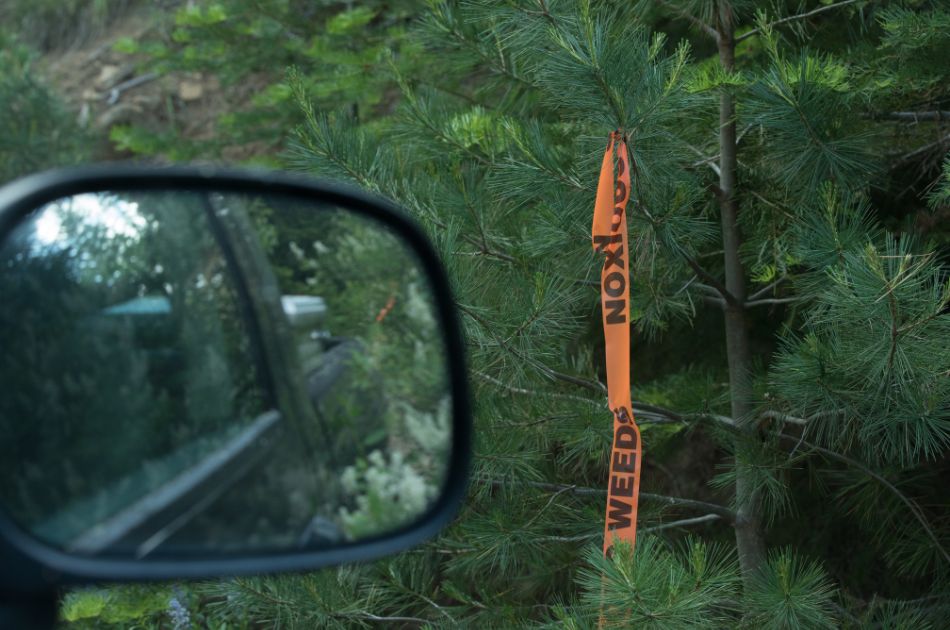
Invasive Plants, Noxious Weeds, and Non-Native Plants
What is classified as an invasive plant? What about a noxious weed? What do we mean when we mention “non-native” plants?
Non-Native Plants
Non-native plants are plants that were brought to our area from other areas of the country or world. They did not originally grow here, but they were brought or planted or are derived from plants that were transported here at some point.
Other words for non-native plants can include “introduced” or “exotic.”
People have grown plants and trees in places where they did not originate for centuries. Sometimes they were brought in to try to fix a problem, such as introducing a plant or tree that was resistant to local pests or diseases.
Other times they were introduced to our area in an attempt to replicate what was growing in a different area.
Sometimes, the growth of non-native plants can be accidental. Perhaps when buying from a nursery, the plant or tree wasn’t labeled properly.
We encourage you to plant and grow native plants and trees whenever possible. They are the best suited for our area and climate, benefit our local wildlife, and have less likelihood of becoming noxious or invasive than non-native plants.
Invasive Plants
Invasive plants are those that are not native to an area (they were brought here from somewhere else), have the ability to spread quickly, and are often responsible for stealing resources and nutrients or, in some way, harming our native plants and environment.
Executive Order 13112, signed in 1999, refers to invasive species in the United States.
It defines an invasive species as a species that is non-native to the ecosystem, as well as something that “causes or is likely to cause economic or environmental harm or harm to human health.” This executive order refers to both invasive plants and animals (as well as fungi, pathogens, and algae).
Often, the terms “invasive plants” and “noxious weeds” are used interchangeably, but there are slight differences.
Noxious Weeds
Noxious weeds are determined by state and federal laws. A noxious weed is officially defined as “a plant that is determined to be injurious to public health, crops, livestock, agricultural land, or other property.” It is against the law to sell, transport, or plant noxious weeds.
View the Federal Noxious Weed List >>
In Pennsylvania, the Controlled Plant and Noxious Weed Act placed weeds in three categories, each category representing how widespread a plant is and the likelihood of future eradication.
New Jersey does not classify noxious weeds, but it does pay attention to invasive species and encourages the planting of native plants.
Native and non-native plant lists from the native plant society of New Jersey
Invasives to Remove
Below are some of the plants that are considered invasive in New Jersey and Pennsylvania. Most are not permitted to be planted anymore, and if you spot them on your property, you should remove them immediately.
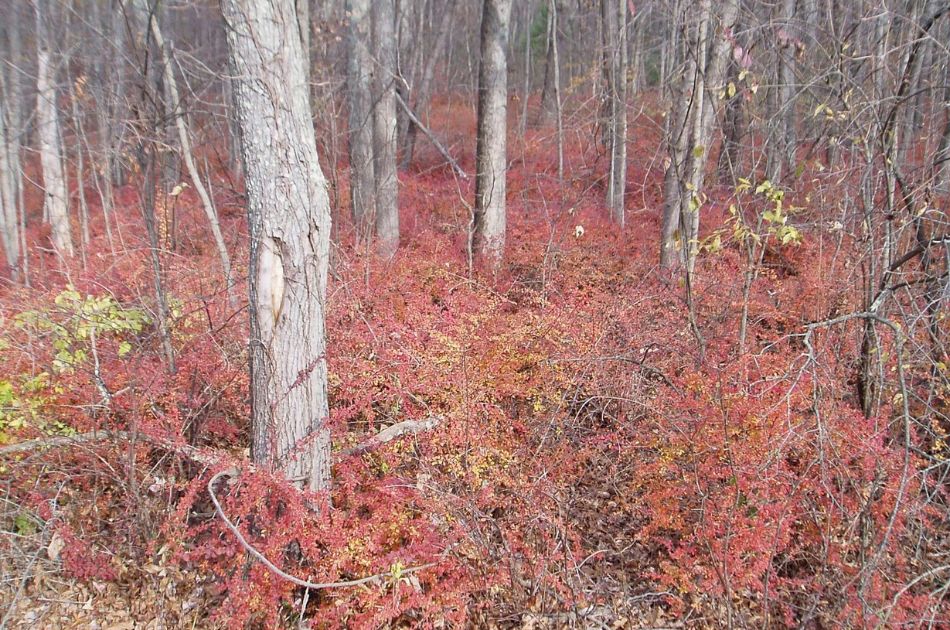
A Japanese barberry infestation. Image courtesy of Leslie J. Mehrhoff, University of Connecticut, Bugwood.org.
Japanese Barberry (Berberis thunbergii)
Japanese barberry is an invasive plant that is made up of a dense cluster of twigs and branches with some spines.
Not only is Japanese barberry invasive, but black-legged tick populations are thought to increase in areas with dense barberry. If you notice problems with ticks on your property, check if any barberry plants have started growing.
Japanese barberry was added to the PA noxious weed list in 2021. By fall 2023, all sellers must stop the sale of Japanese barberry in the state. There are four cultivars that will still be approved; you can learn more from the Pennsylvania Department of Agriculture.
Read more about Japanese Barberry >>
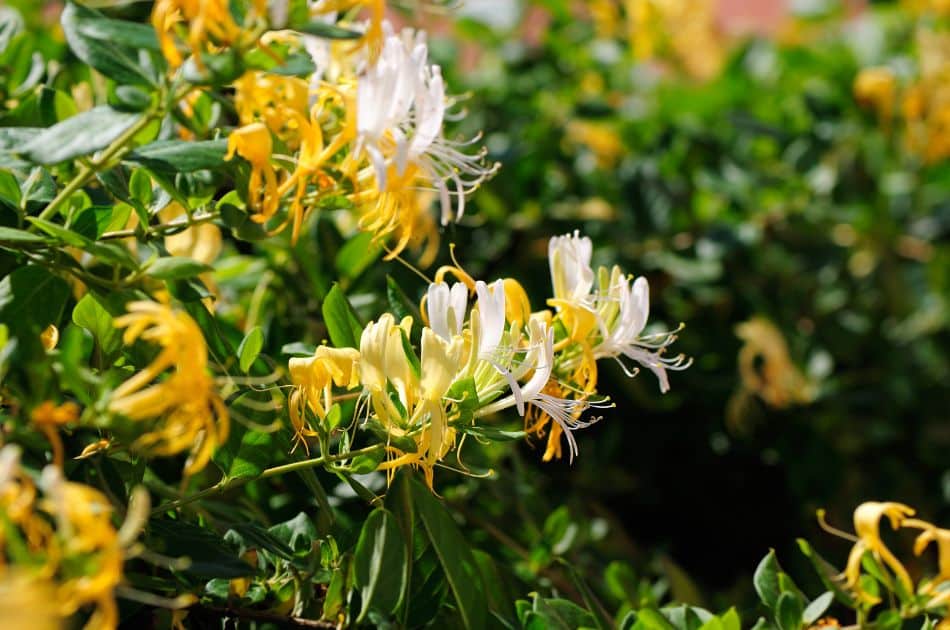
Japanese Honeysuckle (Lonicera japonica)
Japanese honeysuckle spreads not only across the ground but can climb over other plants, stealing sunlight and nutrients from native plants. It spreads through seeds and also through regrowth from the roots.
You may recognize Japanese honeysuckle by its fragrance – the spring flowers release a strong scent. Though it was brought to the U.S. as an ornamental plant, it has overtaken many areas, crowding out native vegetation and destroying native habitats.
Learn more about Japanese honeysuckle >>
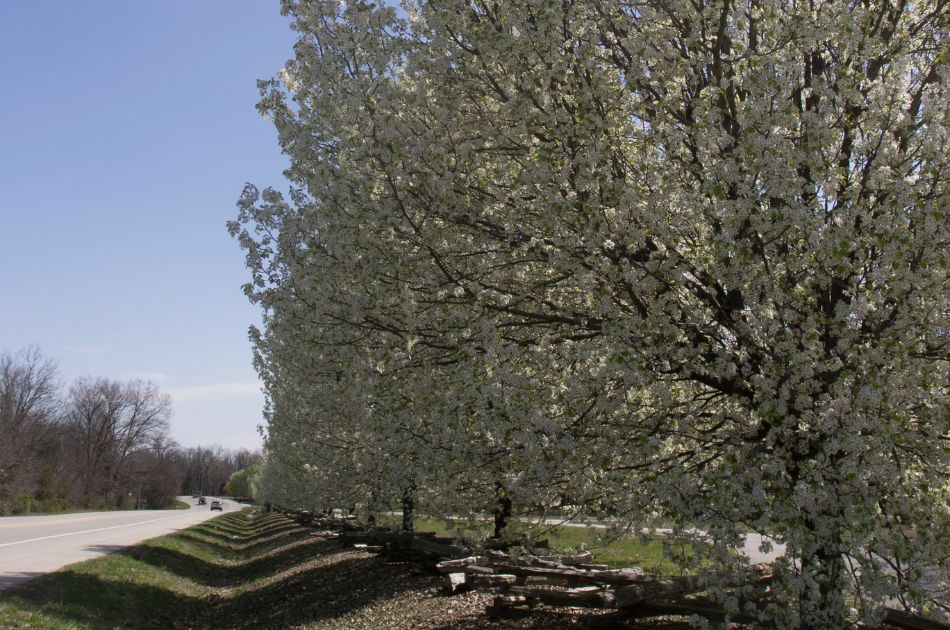
Callery or Bradford Pear (Pyrus calleryana)
This once-popular street tree is known for its spring flowers. Callery pear trees, also known by the cultivar, Bradford, are problematic for several reasons.
The flowers that make them look attractive from a distance have a rancid smell. As the fruit falls and rots in the fall, that can stink too.
Most flowering trees are known to be small and ornamental, but Callery pear trees grow…and grow. Many can reach 50 feet tall or more. Callery pear trees are also known to have brittle and structurally unsound wood, which leads to a lot of fallen branches and broken limbs.
Finally, Callery pear trees produce a lot of shade – so much that they can prevent other plants from growing in any area where they cast shade.
Learn more about callery pear trees from PennState Extension >>

Tree-of-Heaven (Ailanthus altissima)
Ailanthus trees have received an abundance of attention lately because they are the preferred host for spotted lanternflies. If you have any tree-of-heaven trees on your property and haven’t already removed them, we recommend that you do so.
See photos of tree-of-heaven from invasive.org >>
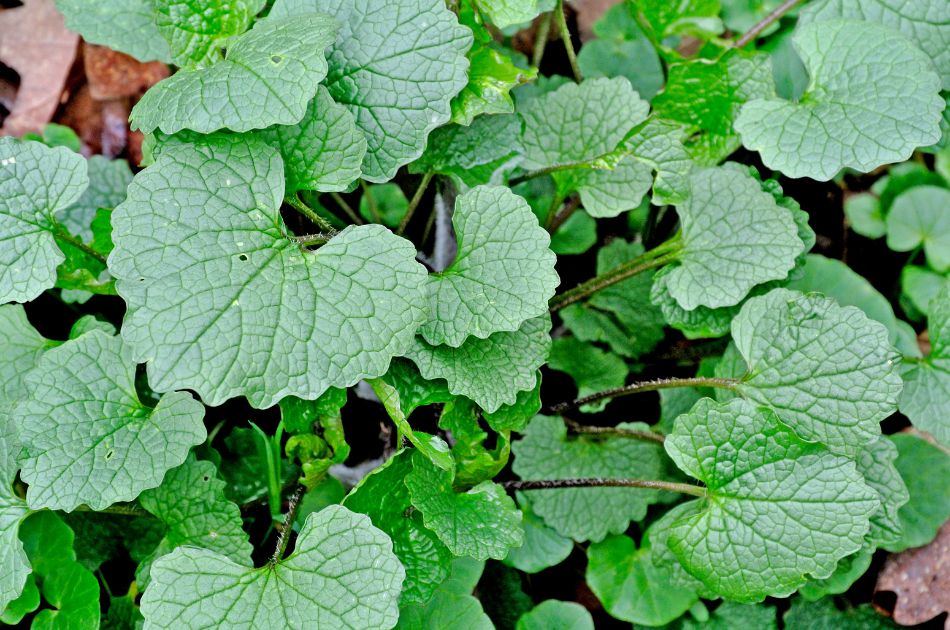
Garlic mustard (Alliaria petiolate)
Garlic mustard is considered invasive across most of the country and is one of the few invasive plants that can be stopped by pulling it out by the roots.
If you spot garlic mustard growing on your property, pull it as soon as possible before it spreads further.
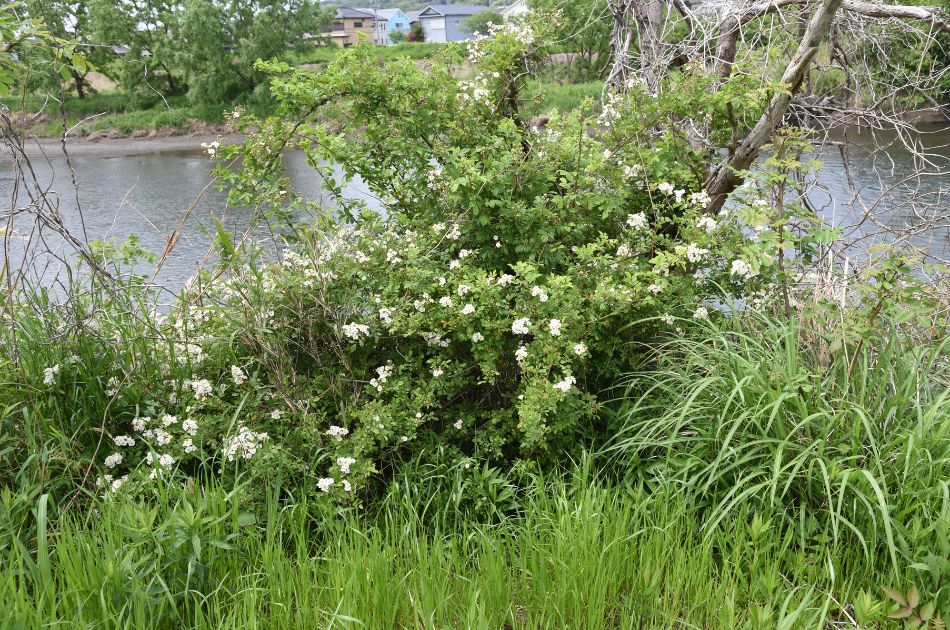
Multiflora Rose (Rosa multiflora)
You’ve probably seen multiflora roses all over the place, and that is one of the reasons it is officially classified as a “Class B” noxious weed in Pennsylvania.
Multiflora rose is sneaky; many people don’t want to remove it because of its beautiful flowers.
There are so many multiflora rose plants, however, that it is reducing the diversity of our natural flora. This can have negative impacts on pollinators, birds, and other wildlife.
Muliflora rose is prolific, reproducing in three different ways: seed dispersal (seeds can last for 20 years), root sprouting, and a process known as “layering,” where a branch, or cane, grows downward, produces roots, and becomes a separate plant.
It can be difficult to remove multiflora rose, so removing young plants before they aggressively spread is the best method.
Learn more about multiflora rose plants >>
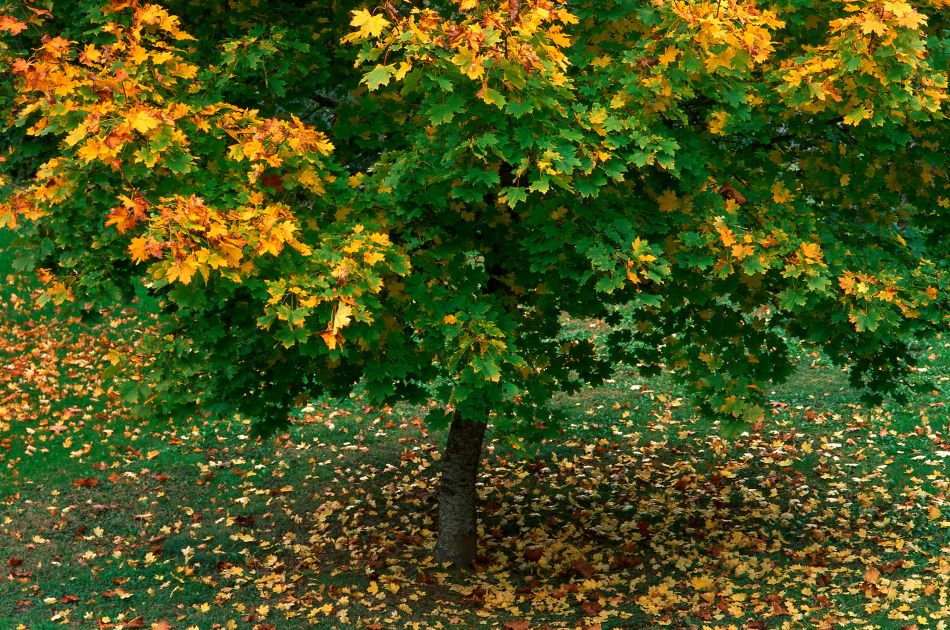
Norway maple (Acer platanoides)
There are many maple tree varieties that are native to New Jersey and Pennsylvania, but the Norway maple originates from parts of Europe and Asia and was brought here as a shade tree. There is often insufficient room for the root system of Norway maples to spread, which can lead to girdling roots and other root problems.
The wood of Norway maples is not strong and breaks easily, especially during storms or strong winds. The shallow roots are known to steal water and nutrients from other nearby plants and trees.
The Norway maple and sugar maple (Acer saccharum) can look similar, but one way to tell the difference is that sugar maples have clear sap in the leaf stem, while Norway maples have white sap.
Learn more about Norway maples >>
Learn to Recognize Other Invasive Plants
The plants listed above are just some of the many that are considered invasive in New Jersey and Pennsylvania. As introduced species adapt to our environment and out-perform native plants, more invasives are recognized as problems for our area.
You can learn more about the plants, trees, and shrubs to avoid by clicking on any of the following links:
- FoHVOS New Jersey Invasive Species Strike Team Do Not Plant List
- New Jersey (Wikipedia) list of invasive plant species
- Pennsylvania list of invasive plants
- Noxious weeds in Pennsylvania
Help Your Property Become Healthier
We hope you have found this information about which plants to avoid (or remove) helpful. Using native plants, shrubs, and trees on your New Jersey or Pennsylvania property provides more benefits for you and for the wildlife that coexists with us in our communities.
Contact us if you have any questions about how to remove invasive plants or noxious weeds from your property.
Organic Plant Care can also assist with soil testing, shrub care, organic pest treatments, and more to help you make your yard or garden a year-round, sustainable, and healthy part of our native landscape.
GET THE LATEST NEWS
Subscribe to the Organic Plant Care Newsletter and get timely and helpful tips and updates monthly.
There's no spam - we promise!





